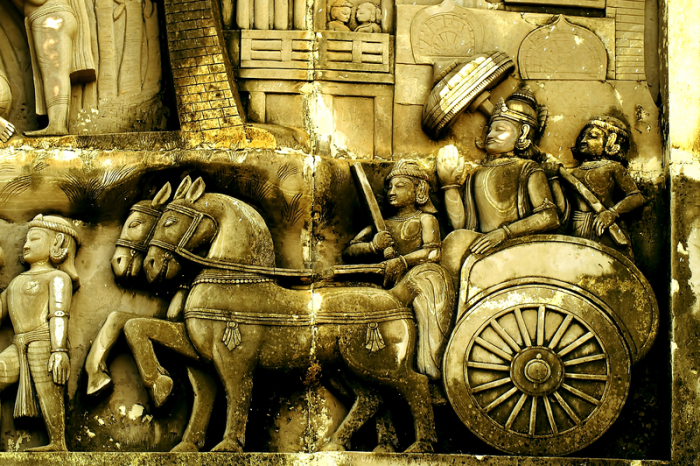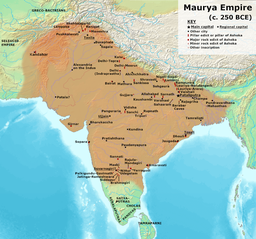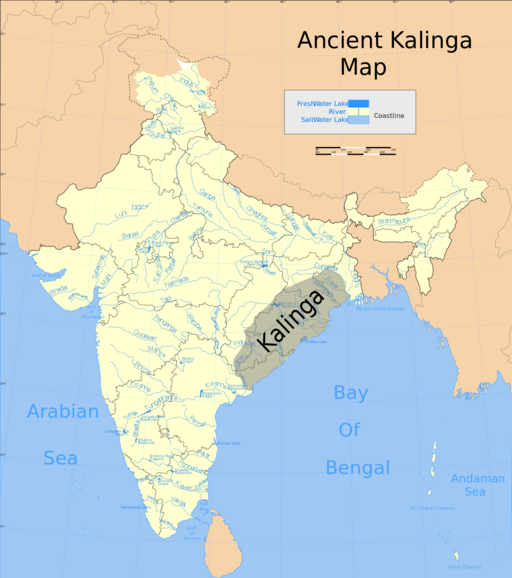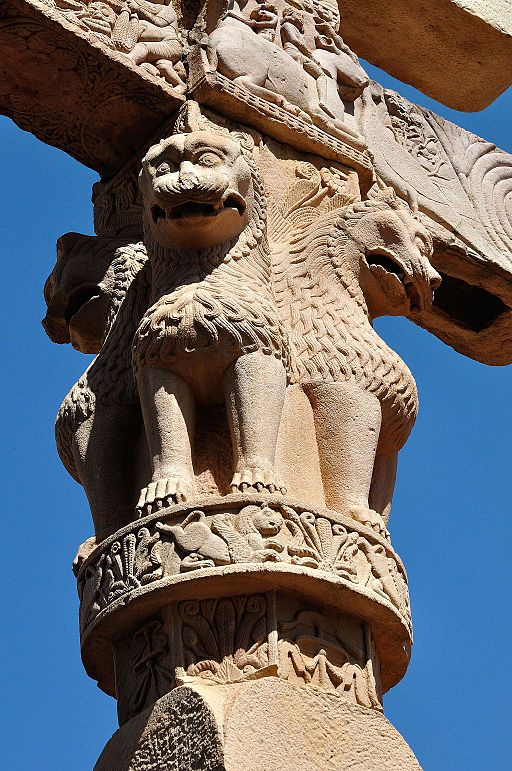

Ashoka was born in 304 BC, he was the son of Mauryan emperor Bindusara and his mother was Subhadrangi. From an early age, he was a great fighter and highly educated in court. Even though he was not the successor of the king yet he was liked by the ministers. At the age of 18, he was sent to Taxila to curb a revolt and maintain law and order in the city. He completed his task swiftly and brought peace to Taxila.

After successfully curbing the revolt, he was assigned the Governorship of Ujjain, a commercial city. When he was the governor of Ujjain, another rebellion started in Taxila and this time the king sent his eldest son, Susima. After some time the king fell ill and died, while Susima was still in Taxila.
 Ashoka seized the opportunity and declared himself the king. According to many old scriptures, it is said that Ashoka executed all of his brothers except one, Vitashoka. After he acceded to the throne, he waged multiple wars on neighbouring states and occupied the territories. He made the Mauryan empire one of the most powerful and biggest empires of that time. The boundaries of his empire extended from Hindukush in the northwest to the Brahmaputra in the east, and from Himalaya in the north to Mysore in the south.
Ashoka seized the opportunity and declared himself the king. According to many old scriptures, it is said that Ashoka executed all of his brothers except one, Vitashoka. After he acceded to the throne, he waged multiple wars on neighbouring states and occupied the territories. He made the Mauryan empire one of the most powerful and biggest empires of that time. The boundaries of his empire extended from Hindukush in the northwest to the Brahmaputra in the east, and from Himalaya in the north to Mysore in the south.
Ashoka was called Ashoka the great for multiple reasons,
Ashoka established the largest empire in the Indian subcontinent.
Ashoka had one of the biggest armies, consisting of Infantry, Cavalry and war elephants.
Ashoka was the greatest conqueror.
After the Kalinga war, he vowed to never use violence again and devoted hiself to Buddhism.
He treated every caste equally.
He sent his son, daughter and many missionaries to the promotion of Buddhism all over the continent.
He built thousands of viharas and stupas, the most famous stupa is the great Sanchi Stupa, which has been declared a World Heritage Site by UNESCO.
After Ashoka ascended to the throne, he choose the policy to expand his kingdom, he followed all the duties of the king as prescribed in Kautilya's Arthsashtra. He launched brutal attacks to expand his kingdom this continuous war lasted for 8 years. Apart from these wars, he continued better foreign relations and kept all the areas stable, which were earlier occupied by Chandragupta and Bindusar. He gave himself the title of ‘Devanampriya’ which meant beloved of the gods.
Ashoka had always sought to conquer Kashmir and the only left kingdom in south India Kalinga. After successfully annexing Kashmir he focused his campaign on Kalinga. This war brought a major change in Ashoka's life.
The biggest and most famous war in Ashoka's reign is the war of Kalinga. Kalinga was a kingdom situated in modern-day Odisha it was a commercial state with access to the sea for easy transportation. Ashoka launched the attack on Kalinga in the year 260 BCE. The war with Kalinga was so disastrous, that approx 100,000 soldiers were killed from both sides, and even the civilians of Kalinga came to fight after the death of their soldiers. Thousands of civilians died and over 150,000 were deported.
It was the most brutal war in the history of India. Ashoka became victorious in this war and when he went to the battlefield to celebrate his victory, he was shocked and moved drastically to see the massive death and destruction. He saw the destruction and felt remorse for the Kalinga and at that moment he felt a profound change of heart and renounced war and any kind of violence. He vowed never to pick arms and do any kind of violence. He then followed the path of Buddhism and accepted Buddhism as his religion and vowed to spread the teachings of the Buddha. He became the first Mauryan ruler to accept Buddhism and made Buddhism the religion of his state.

The Kalinga war completely transformed Ashoka. He became a follower of Buddhism and he adopted the policy of Dhamma or Conquest by dharma. To spread Buddha's teaching and to gain publicity for his work, Ashoka built thousands of stupas and multiple rock edicts and pillar edicts with engravings across India. On those pillars, the teachings of buddha and Ashoka's instructions were carved so that people can follow the teachings and obey the dharma. The lion capital of the pillar at Sarnath is one of the most famous edicts of dharma, which later became the national emblem of India.
Ashoka has ordered to build 84,000 stupas across his region and in each stupa, the remains of Buddha were kept. One of the most famous Stupa is Sanchi Stupa. Ashoka sent many Buddhist monks to Kashmir, Afghanistan, Syria, Greece, Nepal, Turkey, Bhutan, China and many other places to propagate Buddha’s teaching and spread Buddhism. The current Buddhist culture in South East Asia is the legacy of Ashoka. He chose non-violence to the extent that he banned the killing of animals across his region.

Ashoka’s kingdom was divided into provinces and provinces were subdivided into Visayas and Janpadas and it was further subdivided into villages. His kingdom was divided into five provinces. The central Province was Magadh and each Provinces ware.
Provided with a certain autonomy. The king has financial and administrative controls. His aim was the welfare and security of his citizen and he followed the principle of nonviolence.
All administration and Judiciary were overseen by the king's trusted and experienced Amatya and appointer officials, they all directly reported to the king. He had a wellorganised and proper administration.
Ashoka is one of the most fascinating and greatest emperors of ancient India. He is mostly famous for his renunciation of war after the battle of Kalinga. He is famous in history as the king who renounced the war. Ashoka built the biggest empire in ancient India and ruled over the whole Indian subcontinent. After the battle of Kalinga, he adopted Buddhism and became the biggest patron of Buddhism. He sent many missionaries and engraved many stone edicts to spread the teachings of buddhism.
Q1. What was Ashoka’s Dhamma?
Ans. Dhamma can be simply understood as instructions, Ashoka’s Dhamma were instructions for a better code of conduct in society. It was a decree that should be followed for the betterment of society.
Q2. why did Ashoka renounce war?
Ans. Ashoka renounced the war after seeing the death and destruction after the war of Kalinga, it changed his heart and he chose the policy of non-violence.
Q3. whar were the messages given by Ashoka for the betterment of society?
Ans.
Respecting everyone's cast.
Being gentle with the poor.
Doing welfare of citizens.
Respecting each religion.
Q4. What was the policy of Ashoka before the Kalinga war?
Ans. Ashoka had adopted the policy of expansion and for that, he had done multiple wars. he sought to increase his empire.
Q5. who were Nagaraguttika?
Ans. They were reporters who report to the king about general and public affairs.